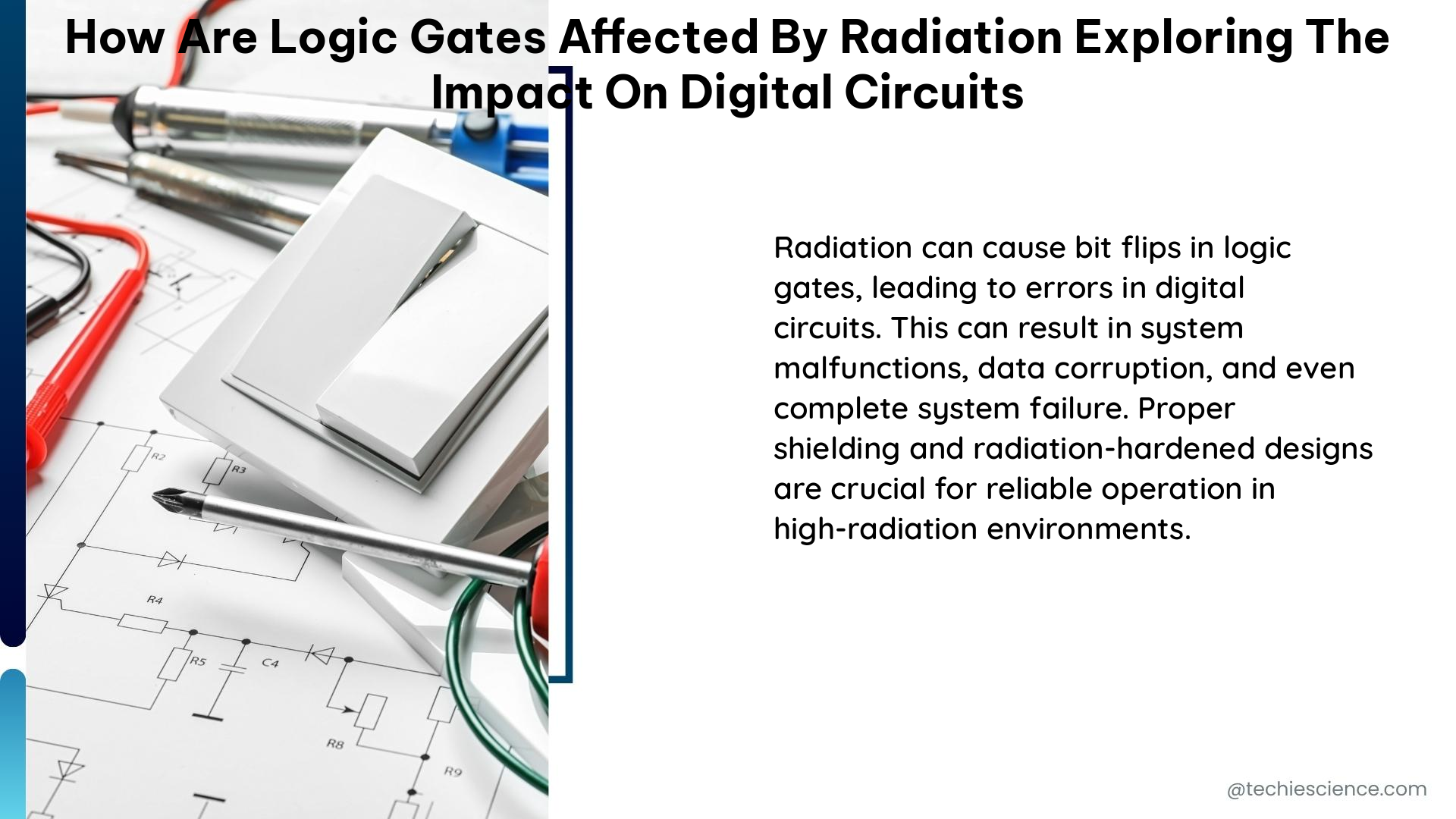Radiation can have a significant impact on the performance and reliability of digital circuits, particularly at the level of logic gates, which are the fundamental building blocks of these systems. Understanding the effects of radiation on logic gates is crucial for designing robust and fault-tolerant digital circuits, especially in applications where they are exposed to harsh radiation environments, such as space exploration, high-energy physics experiments, and nuclear power plants.
Quantifying the Impact of Radiation on Logic Gates
The impact of radiation on logic gates can be measured and analyzed through various parameters, including:
Cross-section
The cross-section is a measure of the probability of a radiation particle interacting with a sensitive volume in a device and causing an error. It is typically expressed in units of cm^2/device or cm^2/bit. For example, the cross-section for single-event upsets (SEUs) in a 64Kb SRAM can range from 10^-14 to 10^-12 cm^2/bit, depending on the technology and radiation environment.
Error Rate
The error rate is the number of errors per unit time, often expressed in errors per bit-day. A study of SRAMs in a space environment found error rates ranging from 10^-8 to 10^-5 errors per bit-day, depending on the radiation fluence and device technology.
Single-Event Effects (SEE)
SEE are transient or permanent changes in the state of a device caused by a single radiation particle. SEE can be classified into different types, such as:
- Single-Event Upsets (SEUs): Temporary changes in the state of a logic gate or memory cell, leading to data corruption.
- Single-Event Transients (SETs): Temporary voltage spikes or glitches at the output of a logic gate, which can propagate through the circuit and cause errors.
- Single-Event Latch-ups (SELs): Permanent short-circuit conditions in the device, which can lead to device failure.
These SEE can cause errors in logic gates, leading to functional failures or data corruption in digital circuits.
Impact of Radiation on Logic Gate Performance

The impact of radiation on logic gates can be observed in various ways, including:
Errors in Logic Gate Outputs
A study of XOR logic gates at 16nm CMOS and FinFET technologies found that SEE can cause errors in the output of the gates, with the probability of error depending on the radiation fluence and the gate geometry.
Propagation of Errors through the Circuit
SETs can cause temporary voltage spikes or glitches at the output of a logic gate, which can then propagate through the circuit and cause errors in downstream logic gates or memory elements.
Permanent Damage and Device Failure
SELs can lead to permanent short-circuit conditions in the device, causing device failure and rendering the digital circuit inoperable.
Strategies for Radiation Hardening of Logic Gates and Digital Circuits
To mitigate the impact of radiation on digital circuits, various radiation hardening techniques have been developed, including:
Selective Use of Radiation-Hardened Logic Gates
A study of radiation hardening techniques found that selectively using logic gates that minimize the SEE generation or propagation can reduce the error rate in digital circuits.
Redundancy and Fault Tolerance
Techniques such as triple modular redundancy (TMR) and error-correcting codes (ECC) can be used to introduce redundancy and fault tolerance in digital circuits, allowing them to continue functioning even in the presence of radiation-induced errors.
Process and Device-Level Hardening
Modifications to the semiconductor fabrication process and device-level design can also improve the radiation tolerance of logic gates and digital circuits, such as using radiation-hardened transistor designs or adding shielding layers.
Conclusion
The impact of radiation on logic gates and digital circuits is a critical concern in many applications, and understanding the various parameters that quantify this impact is essential for designing robust and reliable digital systems. By leveraging the latest research and techniques in radiation hardening, engineers can develop digital circuits that can withstand the challenges posed by radiation environments and continue to operate reliably in demanding applications.
References
- Allan H. Johnston and Steven M. Guertin, “The Effects of Space Radiation on Linear Integrated Circuits,” Jet Propulsion Laboratory, California Institute of Technology, Pasadena, California, 2016.
- R. D. Schrimpf, et al., “Radiation Effects in Microelectronics,” IEEE Transactions on Nuclear Science, vol. 51, no. 6, pp. 2638-2658, Dec. 2004.
- IEEE Xplore, “Radiation Effects in XOR Logic Gates at 16nm CMOS and FinFET,” 2020.
- Indico CERN, “Radiation hardening digital circuits against SET using design techniques,” 2021.
- LSI-UPM, “Radiation Effects on Electronic Circuits,” 2023.

The lambdageeks.com Core SME Team is a group of experienced subject matter experts from diverse scientific and technical fields including Physics, Chemistry, Technology,Electronics & Electrical Engineering, Automotive, Mechanical Engineering. Our team collaborates to create high-quality, well-researched articles on a wide range of science and technology topics for the lambdageeks.com website.
All Our Senior SME are having more than 7 Years of experience in the respective fields . They are either Working Industry Professionals or assocaited With different Universities. Refer Our Authors Page to get to know About our Core SMEs.